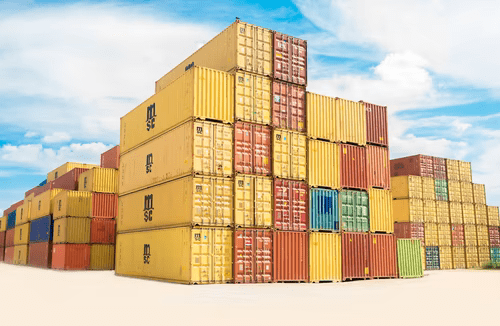
If you’re planning a move to or from Australia, using a shipping container is the easiest way to get your furniture and household belongings moved. If you’ve never had any exposure to how international shipping works, it can be quite an up and down exercise to get everything right!
It’s more convenient than ever to rent or purchase a container and move your belongings around the globe. But it’s not as easy as you might think! You’ll have to arrange everything from cleaning your goods and packing them to arranging side loader services to transport your container.
Moving Your Whole Household in One Easy Container
There’s currently a huge demand for sea freight. With so many people relocating to various parts of the world, many find it more economical to take their current possessions with them. When it comes to successful shipping, it’s all about packing and preparing your container.
Most containers are transported on trucks or side loader transport before they reach the vessel that will take them on their sea journey. Once loaded, the container will shift often as the cargo vessel endures waves and rigorous sea currents. If the container contents aren’t packed properly, the bulk of your possessions will get broken or damaged.
Easy Tips for Packaging Containers
Container packaging can be divided into two sections. LCL refers to “less than container load” which means your possessions take up less than a full container. FCL refers to “full container load” which refers to a full container. There are specific ways to pack each type of container to ensure minimal damage.
LCL Tips
If your goods don’t fill a container, you might have to share the container with other shippers. Wherever possible, containers are filled to accommodate as many customers as possible. Follow these expert tips for loading your less than full container:
- Clean everything: Make sure that all items are cleaned. Ensure there are no traces of sand insects or forbidden items on any of your items. Make sure you research the guidelines of how items need to be cleaned.
- Strong, sturdy boxes: Minimise the risk of damage to your possessions by using strong, durable boxes. Make sure you’re using heavy-duty boxes made of corrugated cardboard.
- Quality packing tape: Your container will endure many different temperatures. In hotter, more humid temperatures, the adhesive on the tape might come loose. Ensure you use quality tape. Put a few layers of tape around the boxes for additional support.
- Wrap wisely: Wrap your cargo in black shrink wrap to minimize potential theft. Make sure the items are wrapped tightly from bottom to top to avoid too much moving during the journey.
- Label everything: Label your cargo clearly and within the required guidelines. Boxes that contain fragile items should be clearly marked as such. Items that shouldn’t be turned on their sides, like fridges, should be labeled as “top load” only.
- Consider regulations regarding wood: Some countries are particular about the type of wood that enters their borders. This is a result of the spread of pests. Ensure you comply with the ISPM 15 obligations. This will give you all the guidelines needed to transport wood.
FCL Tips
If your goods fill an entire container, you won’t share your space with anyone. However, you’ll still have to take precautions to keep your products safe. Tips to load a full container include the basics discussed above as well as a few additional tips:
- Distribute weight evenly: Make sure you distribute the weight evenly across the floor of the container. Cover the entire space of the container.
- Use dunnage: It’s important to use dunnage – the material that keeps cargo in a secure position on the ship. Dunnage can be made of wood or matting. You can even place dunnage between objects as added protection.
- Pack tightly: Pack items close together and if necessary, use packing straps to secure cargo and prevent damages from occurring. Don’t put too much pressure on the door of the container. Speak to the contractors at the side loader transport company for the best tips to pack and constrain the boxes and other goods.
- Check the container weight limit: Don’t overfill the container. Be sure to stay within the limits of the maximum weight specifications. Ensure that you declare the exact weight of the items as required. Items can be weighed individually, or the container can be weighed as a whole when you’re done loading.
- Use pallets: Where possible, palletize your cargo. This will make handling easier when it comes time to unload. Pallets will make it easier to use a forklift to unload goods when they reach their destination.
Final Thoughts
Cargo that isn’t secured properly can either arrive damaged or be rejected by carriers. When carriers reject the items in your container, it could lead to additional costs on your part. If you’re sharing a container, goods that aren’t packed correctly could potentially damage other people’s items. It’s always important to take extra precautions to make sure your goods are packed and stored correctly. Following all the guidelines will ensure your goods arrive safely!